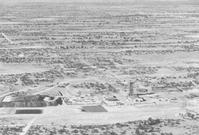


Chapter 10
I 1. Introduction
II 2. The Role Of Technology
III 3. Some Highlights Of Australian Minerals Technology
IV 4. Other Technological Achievements (in brief)
i Manganese
ii Tin
iii Tungsten
iv Tantalum
v Uranium
vi Gallium
vii Lithium
viii Silicon
ix Platinum
x Rare Earths
xi Phosphate
xii Diamonds
V 5. Export Of Technology
VI 6. Education And Research
VII 7. The Scientific Societies
VIII 8. Conclusion
References
Index
Search
Help
Contact us

Uranium
The discovery and development of Australia's undoubtedly large resources of uranium has included outstanding technological successes in exploration, mining, metallurgy and chemical engineering, and has established that, despite many complications of social, political and environmental nature, Australia is a major source of uranium mineralization and capable of becoming a major longterm producer of nuclear energy materials. The present output of 5000 t/a of yellowcake is of the order of 10 per cent of Western World production; it will be supplemented in the early future by at least 2000 t/a from Roxby Downs, and other proved reserves in the Northern Territory and elsewhere could be brought to production when the world market expands.Confining the discussion to the technological achievements it may be recorded that the major features of interest include the production of copper and uranium oxide at Rum Jungle in the period 1949-1971; the concentration of the unusual davidite ore of Radium Hill by heavy media separation and flotation and the acid leaching of the concentrate at Port Pirie in the period 1954-1961; the development of radiometric ore sorting at Mary Kathleen; the discovery and development of the great Roxby Downs copper-gold-uranium deposit. The experimental nuclear reactor at Lucas Heights, NSW, has been a source of radio-active materials for medical and other purposes including the use of particular interest to the mineral industries in on-stream analysis in mines, mills and smelters. On the research side a development of great potential is the Synroc process of incorporation of long life nuclear fission products in a highly stable ceramic matrix.

 |
Australian Academy of Technological Sciences and Engineering |  |
© 1988 Print Edition page 767, Online Edition 2000
Published by Australian Science and Technology Heritage Centre, using the Web Academic Resource Publisher
http://www.austehc.unimelb.edu.au/tia/733.html